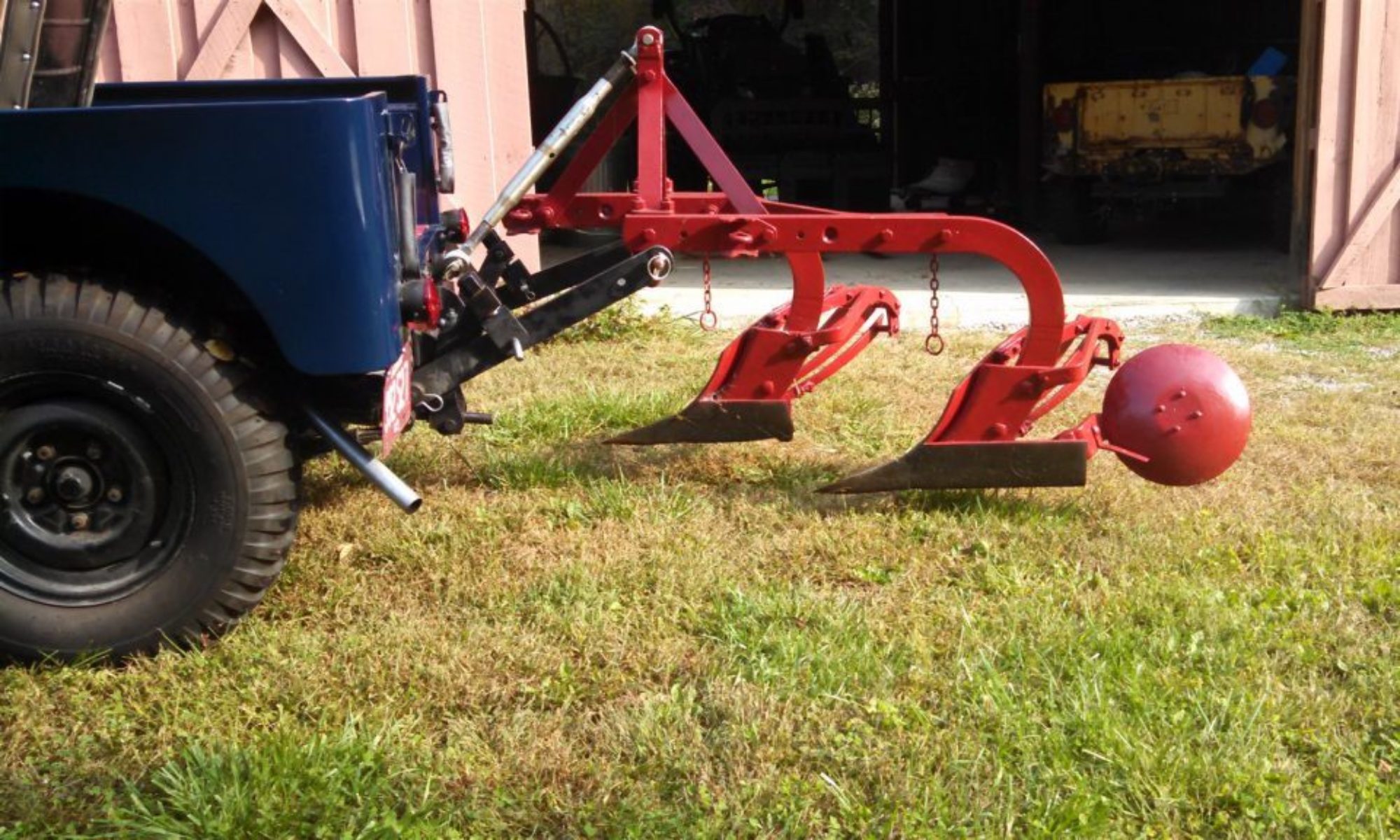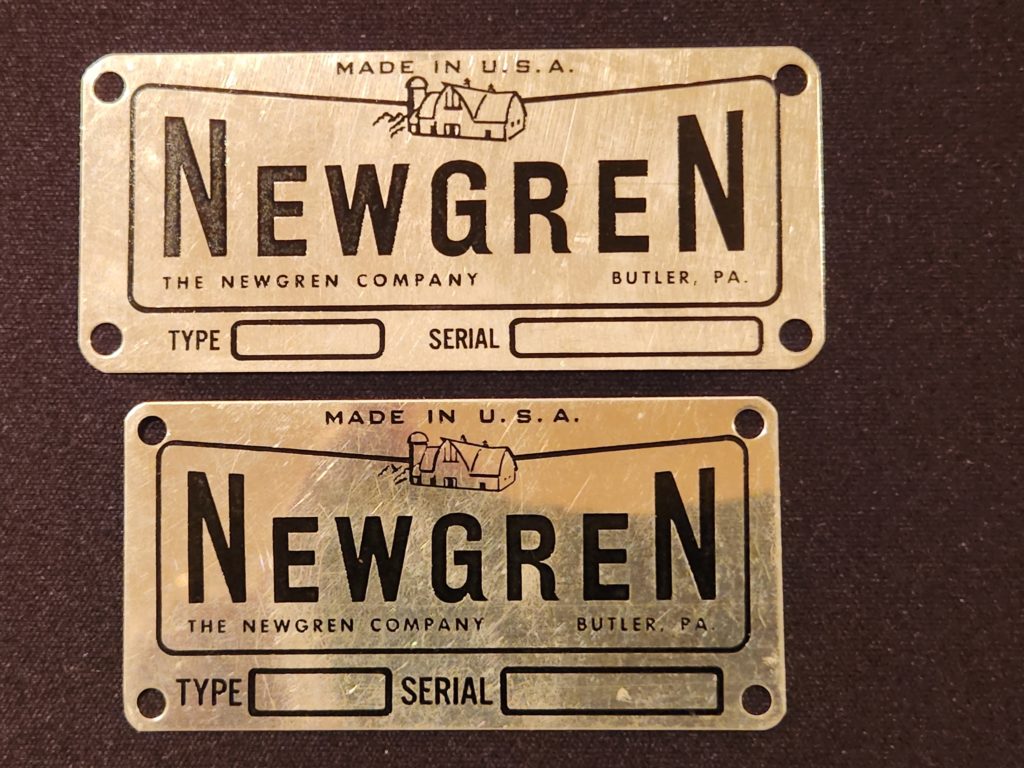
For over a decade, PBS’ series History Detectives tried to unravel mysteries involving, among other things, objects appearing in unusual places. Thanks to Gary M. from Sheridan, AR. we have our own mystery and we could sure use the History Detectives help. Gary had sent us a note saying he had found Newgren equipment tags in a model airplane box and wanted to know if we were interested in them. We sure are and asked for more information. Here is Gary’s story.
“Since my dad and my ex father-in-law both worked for Grumman (my dad, during WWII and my father-in-law from about 1963 until retirement in 1985), I’ve had an interest in Grumman aircraft. About 8 years ago, while searching for a large scale model of the F3 WWII biplane, I found a model by Tomasco (Toledo model works) of a F4B-F online. The photos showed a biplane, but the F4 designation, as I understood, was the Wildcat, the monoplane descendant of the F3F. Even with the possible error, I decided to buy it.
When it arrived, I was disappointed in that the kit was far from complete and not buildable. So on the shelf it went.
Fast forward to yesterday when I was going through my collection of kits, I came across the model. I opened it up, got disappointed again, but noticed the Newgren tags. Knowing nothing about the company, I went on-line and found a number of articles about their farm accessories for Jeep farm equipment. But more importantly, found your site. I found it somewhat coincidental that the tags, for a company in Butler PA to be in a box for a model made in Toledo, OH. But with the purchase of Newgren (then in Toledo) and moved to Butler. it kind of made sense.”
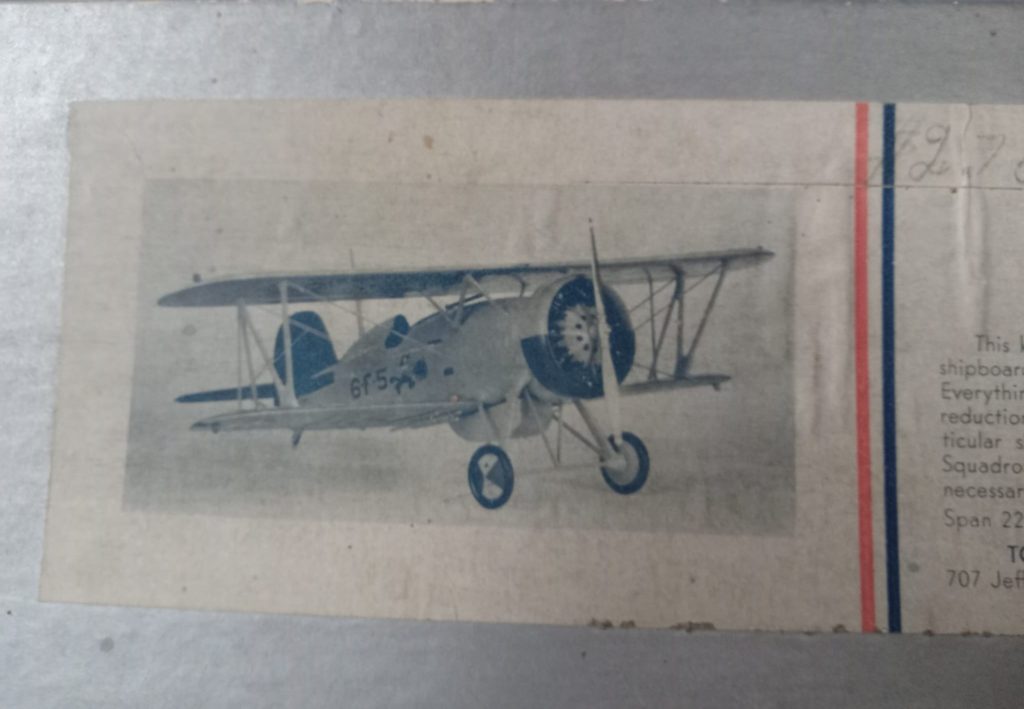
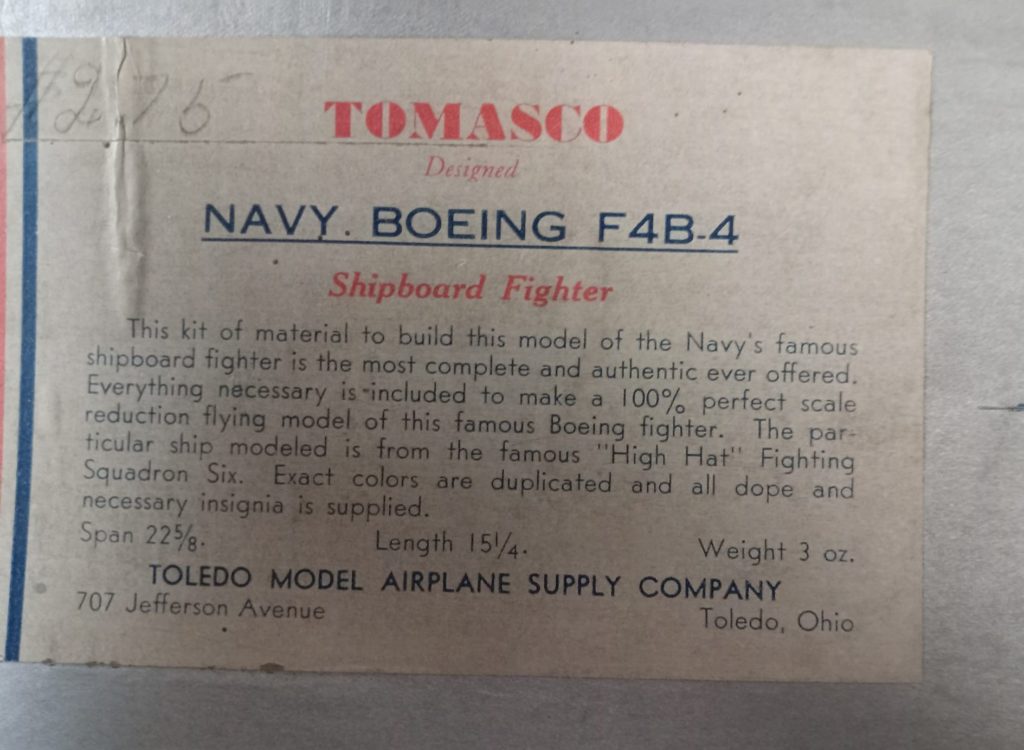
Gary added –
“I’ve been trying to get some info on the company/model, but have had little success. The company, The Toledo Model Airplane Supply Company, 707 Jefferson Ave, Toledo, Ohio (no zip code) or ‘Tomasco’, operated from 1932-1942. The tag on the box indicated a Boeing F4B-4, which I incorrectly assumed was a mistake, which was produced from 1930-1932. My confusion was the F4 designation, also used on the Grumman Wildcat.
The box indicates the model had a 22 5/8 wingspan, 15 ¼ length and weighed 3 oz (must have used super lightweight paper to build it). I attached a photo of the labels.
The box is 18×4.5×1.5 and in surprisingly good shape for its age.
A google maps search shows an office building at 707 Jefferson.
I have searched through my purchasing history going back 8 years but haven’t found out where I got it yet.”
OK, so what can we surmise?
The first thing we noted was that the tags, as Gary stated, lists the company in Butler. So we know they were produced after the MAECO acquisition of Newgren and the take over by American Bantam. We started guessing that our mystery kit builder might have lived/worked in Toledo (where both Newgren and the model kit company were located). Suppose he worked for the company that made tags for Newgren, We know that at the point when American Bantam started using their own tags, the Newgren tags would become scrap metal.
We are not model builders, but we could see the tags might be handy for adding weights to a very light model plane. There are four tags of the same dimensions (4 7/16″x1 1/2″} and one a smaller size {3″x1 1/2″}. That fact also gave us some information that we hadn’t know or noticed, mainly that Newgren used at least two sizes of tags for equipment. We need to check the tags on the equipment we have onhand.
But back to our kit builder. Perhaps he (or a parent) worked for the company that produced the tags and had decided to put the obsolete parts to good use. Here we are assuming that Newgren wasn’t producing the tags in-house. Newgren was first a marketing and distribution company, buying and rebranding implements from multiple manufacturers. (We continue our research in this area.) At this point we might surmise that a company in Toledo was making tags for Newgren and when the company left town, they produced new tags (to be sent to implement producers) that contained the new address.
But wait there’s more
When Gary sent the five tags, he included a bonus surprise –
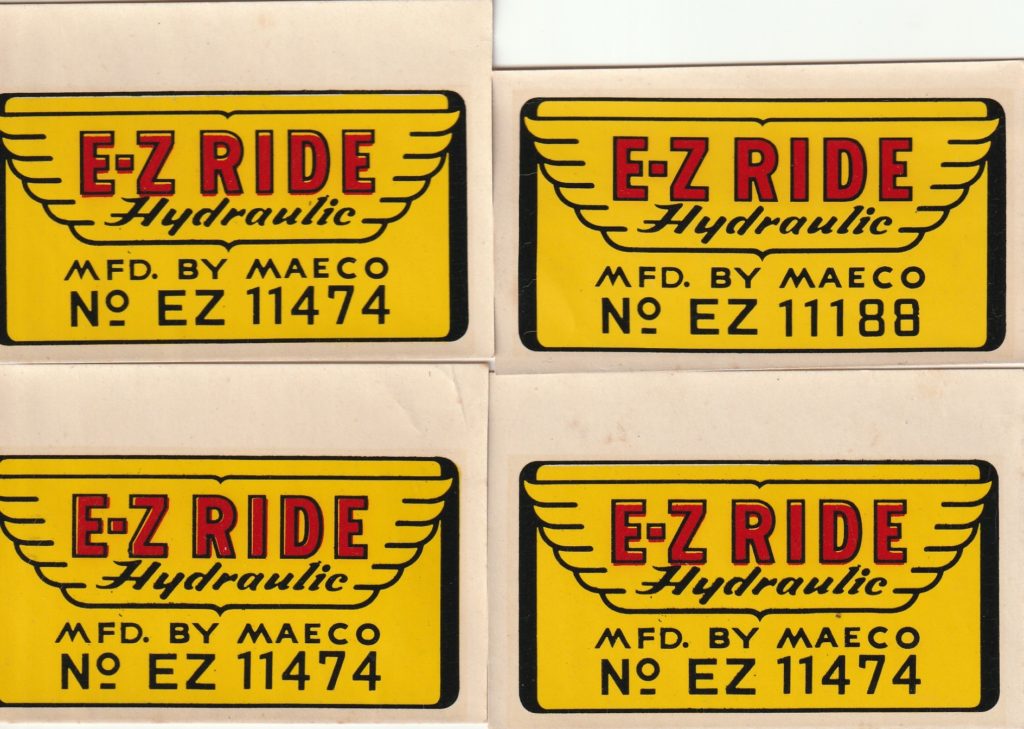
Also inside the box were four decals for “E-Z Ride Hydraulic” shock absorbers. Three of the four have the same serial number. We will try to learn more about the shock, but for now we need to figure out how, and why they ended up in the box.
Did the model builder live and work in Monroe and not Toledo? Did the same company make metal tags and decals? Is this a complete red herring? Where are the History Detectives when you need them?
So why do we care?
There is so little information available on the Newgren Company, that every little bit helps us build a history. We will continue to research the maker(s) of the tags and decals. We are especially thankful that Gary took the time to let us know about his find.
